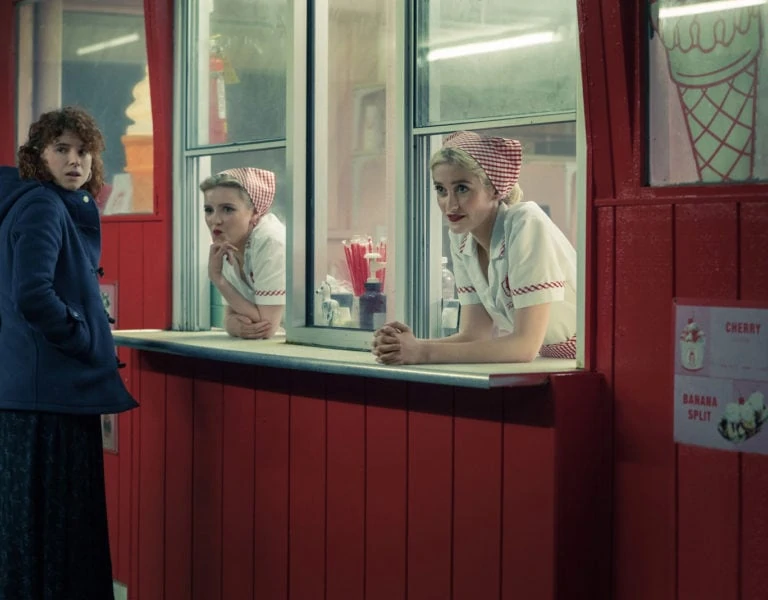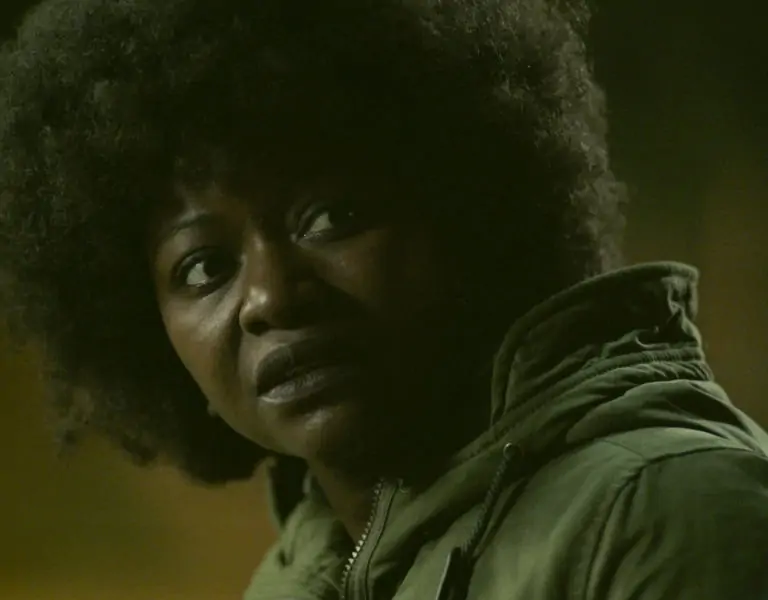HIDDEN HORROR
Adopting unconventional filming techniques and a hidden network of cameras, The Zone of Interest observes one of the most harrowing periods in history through a modern lens. Director Jonathan Glazer and cinematographer Łukasz Żal PSC discuss how working with sets free from cameras and crew and shooting in real rather than beautiful locations allowed them to tell an authentic and haunting tale.
In cinematic storytelling, what unfolds on and off screen can be equally powerful, as skilfully demonstrated in Jonathan Glazer’s latest creation, The Zone of Interest. In the multi-sensory immersive experience, what is in the frame, combined with haunting sounds of the atrocities taking place out of sight, paint a chilling picture.
The harrowing Holocaust tale centres on the real-life Nazi death camp commandant, Rudolf Höss (Christian Friedel), and his wife Hedwig (Sandra Hüller) as they set out to build an idyllic life for their family in a house and garden next to the Auschwitz concentration camp.
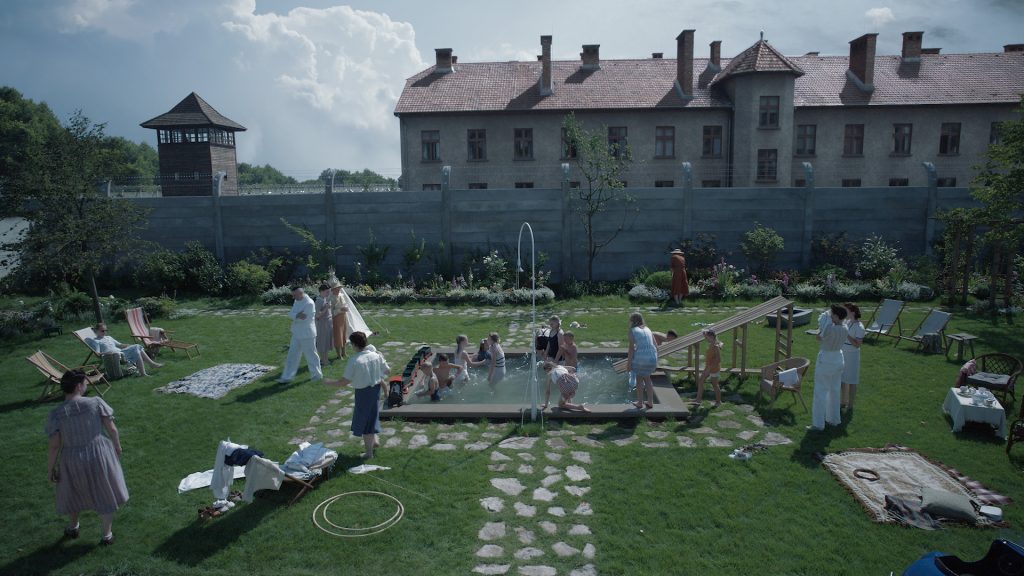
Loosely based on Martin Amis’ 2014 novel of the same name, British director Glazer’s adaptation not only scooped the Grand Prix at Cannes this year, the buzz around the powerful production continued as audiences were impacted by the disturbing contrast of the very human story of a family and the horror next door.
British Cinematographer attended the packed Cannes press conference following the screening of the much-anticipated film where Glazer and some of the cast and crew, including Academy-nominated and two-time Camerimage Golden Frog Award winner, cinematographer Łukasz Żal PSC (Ida, I’m Thinking of Ending Things, Cold War) shared details of the unique process behind the production.
Discussing the film – the title of which refers to the term used by the Nazi SS to describe the 40-square-kilometre area surrounding the camp on the outskirts of Oświęcim, Poland – Glazer revealed that he was trying to “talk to the capacity within each of us for violence. To try to show these people as people and not as monsters was very important because it’s convenient for us to try to distance ourselves from them because we think we could never behave that way, but we should be less certain of that.”
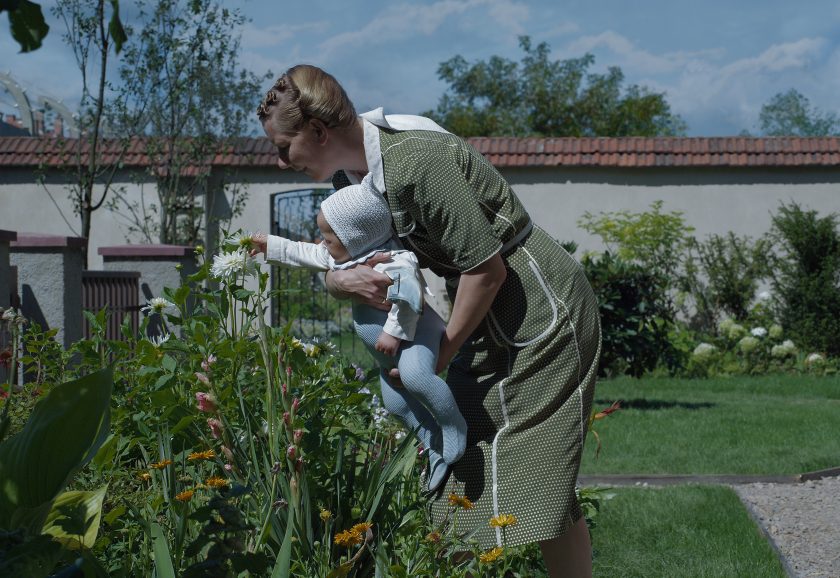
When Glazer began the process he admits he was unsure what kind of film he was going to make or what perspective it would come from, so he spent the first two years after making Under the Skin (2013) researching the subject. “It’s such a vast topic and there has been so much extraordinary material written about it. Myself and producer James [Watson] started to engage with it more fully and that led us to visiting Auschwitz which was a very profound week of my life. But I still didn’t know what I was going to make,” says Glazer.
“It began to evolve from my own direct experience of that visit and my own journey. The house and garden the commandant and his family lived in and its proximity to the camp was jaw dropping and that just got to me. I felt I was going to make something about the wall that divided the camp from the garden initially and that wall became a manifestation of something we tell ourselves – we compartmentalise things to work for our own convenience.”
Before collaborating on The Zone of Interest, Glazer asked Żal to shoot an Alexander McQueen commercial, a project which the Polish cinematographer suspected might be a “test” preceding a project the director wanted to team up on in the future. Speaking to us in build up to the film’s screening at Camerimage, where it competed in the Main Competition and went on to win the FIPRESCI Award, Żal revealed more about what stood out about a story which manages to paint a horrifying picture whilst being detached from the darkness unfolding out of sight.

“I was so impressed by the script because you think you’re observing a monster in Rudolf Höss but then you realise the monster has the same life as us – he goes to the lake with his family, they have a good life. You start to see yourself in this human,” says Żal.
Glazer’s quest to create an “arena” within which to film the production led the crew to build and shoot on location in Auschwitz, Poland, working with a network of cameras simultaneously capturing the action taking place in and around the building. The director wanted to achieve the feeling of watching “people in their day to day lives. I wanted to capture the contrast between somebody pouring a cup of coffee in their kitchen and somebody being murdered on the other side of the wall, the co-existence of those two extremes.”
Żal continues: “That’s what’s amazing about this film – just observing the characters. It’s not your typical storytelling. Jonathan and I first needed to transfer what was in the script into the story on screen, with no fetishising, no judgement, just observing. The completely different approach we decided to take was exciting – not using beautiful lenses or beautiful light. It can be so easy now to make beautiful images, but we wanted to find a beauty in something which is not beautiful.
“We wanted to film everything in the real area of Auschwitz where the events happened to make it more authentic. The SS headquarters was not the real headquarters and was shot in the city hall in Katowice, but other than that we aimed to shoot in or near the real locations as much as possible.”
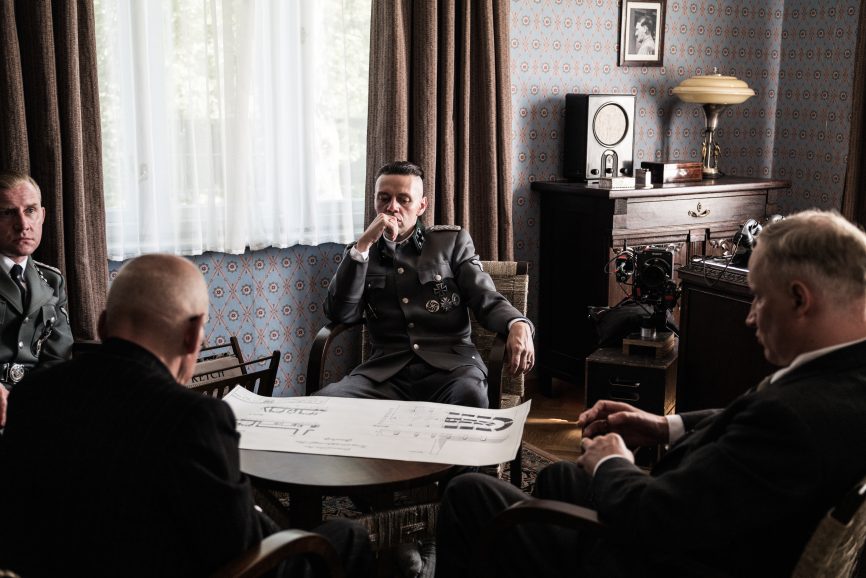
Finding frames
Rather than shooting a period film, Glazer endeavoured to communicate the importance of “one of the worst periods in human history” and “look at it through modern eyes” and using modern technology. Having already carried out a lengthy and involved adaptation process, the director absorbed vast amounts of archival and research material including photographs of the Höss family from the Auschwitz and Birkenau State Museum and Memorial.
The research ensured the story was as faithful as possible, informing the work of British production designer Chris Oddy who had collaborated with Glazer on Under The Skin. Having visited the remains of the original building, Oddy, Glazer and Żal looked for “real rather than beautiful” places to shoot, deciding to adapt the interior and exterior of a derelict building close to the real Höss property which would also allow for the garden to be created from scratch. When Oddy meticulously recreated the Höss’ garden and house, it needed to appear almost as new and as if it had been built a few years prior to the family moving in.
“Łukasz and I discussed how we were going to make this film look mint and new, and for the house, the garden, nothing to be more than four or five years old. Part of our prejudice of how we look at films that are set in a previous time is that we expect everything to be old and of course it wasn’t,” says Glazer.
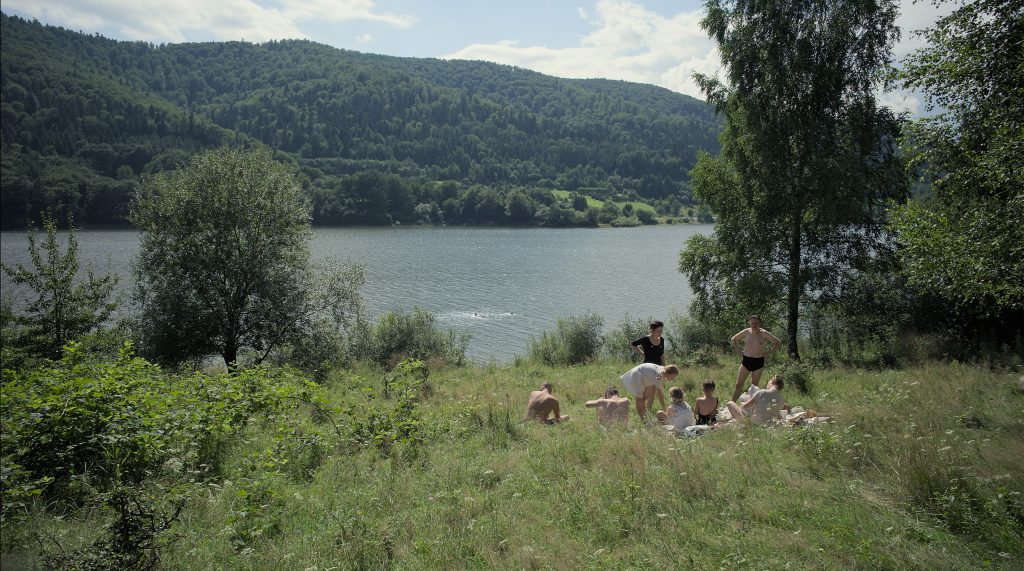
Working with archive photographs, Oddy created previs images that were as close to how the original house had looked. The designs also had to incorporate spaces within the sets for the network of fixed and partially hidden cameras which would capture long, unbroken takes – both scripted and improvised – and a separate concrete bunker where the crew, including focus pullers, Glazer, and Żal, would be stationed, viewing multiple monitors simultaneously. Everything was designed with the goal of making the filmmakers as absent and authorless as possible.
“Jonathan didn’t want it to look like a movie set, the house and garden were free from crew and film tools. Cameras were just attached to the walls and hidden in bushes. He wanted to work with 10 cameras – although sometimes five or seven might be used – and came up with the concept of one big camera as an eye, like Big Brother but in a Nazi house,” says Żal, who, with the director, decided what to show and what would be hidden by experimenting with camera placement and taking photographs on their phones. “We needed to show some elements accompanied by the sound of what was happening outside the frame, creating a feeling or image in the viewer’s mind.”
After recreating a historical colour palette for the house, Żal and colourist Michał Herman carried out camera tests in the spaces at different times of day and with varying amounts of sunlight entering the building to create LUTs: one for day and one for night.
During the prep period between May and mid-July 2021, the first challenge to tackle was technological and required Krzysztof Włodarczyk to design a system comprising of not only hardwired cameras which needed to be controllable in every way, but also 10 simultaneous playback systems. The unlimited number of options available when working with such a vast network of cameras meant constant communication between the close-knit team was more integral than ever, made possible thanks to Riedel’s Bolero comms system.
“The set was like Swiss cheese because everything was hardwired, so we needed holes in the walls, floor and ceiling for cabling to run from the cameras to the container where the focus pullers were so they could be given the signal to focus,” says Żal.
The second and possibly most challenging obstacle was finding the frames for 10 cameras. “It was the same process each time – everything looked terrible at the beginning when we saw the 10 cameras together but then we started to see the beauty in the shots. That’s all thanks to our team of more than 20 hardworking crew including my camera operator Stanisław Cuske, focus puller Radosław “Kokos” Kokot, DIT Krzysztof Włodarczyk, camera assistant Karol Masiarz, and grip Tomasz Sternicki.”
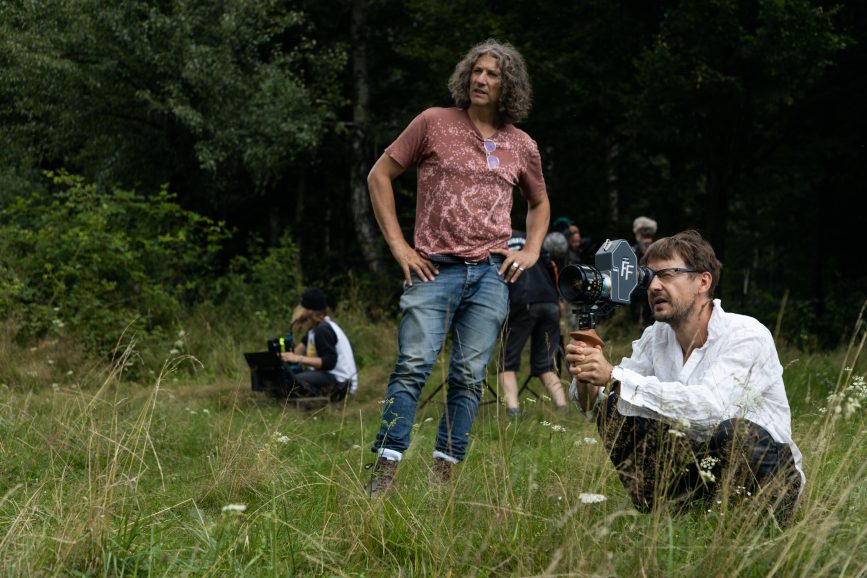
Being objective
In line with the film’s minimalist aesthetic – removing almost all film equipment from the spaces and relying on natural light or practical sources – Żal and Glazer felt an approach revolving around wide lenses and geometrically centred frames best suited the story. They agreed 16:9 was the most “modest and objective” format as they wanted to “avoid the format, lens, light being used in a manipulative or aesthetically pleasing way”. The aim was to be objective, not to judge.
“It was a great task for me to try to tell the story in this way, being completely immersed and forgetting everything we were taught in film school. As well as appreciating that what is beyond the frame can be as important as what’s within it, I learnt that sometimes flat light is beautiful. And now I’m not afraid to not use light or to be more subtractive in the filmmaking process,” says Żal.
“The crew were even given joke titles to fit in with the unusual techniques and kit-free and crew-free sets. Our gaffer Konrad Pruski named himself ‘The Weather Man’ as we were constantly checking the weather and I was ‘MCSS’ which stood for ‘Multi-Camera System Supervisor’.”
As a general rule, the aim was to keep lines straight and for everything in the house to be as geometrical as possible. While geometrically pleasing, Żal also highlights that “the house is ugly, the furniture is ugly, you’d never paint your house like that and you normally wouldn’t use the location in a film because you want to have a nice separation from the background.”
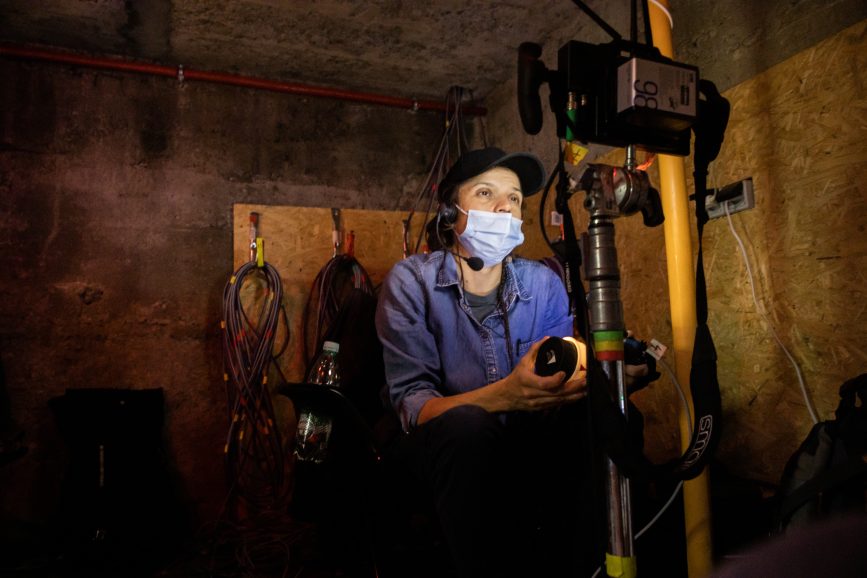
The filmmakers set out to use 21st century technology to produce a crisp and clean look rather than trying to create a vintage feel. They wanted cameras that were as sharp as possible, would show every corner of the frame and could be positioned in a way that did not interfere with the natural flow of thought and movement of the actors. This led them to work with the Sony Venice and its accompanying Rialto camera extension system to achieve an unobtrusive style of shooting, delivering not only in terms of size but image crispness. “We also wanted to shoot 6K and to scale up which the Venice allowed. The ability to shoot at ISO 3200 was also helpful when we worked with only 40-watt bulbs, candles, and oil lamps rather than film lights,” he adds.
Compact lenses were required to fit in with the observational techniques adopted. During lens testing, Glazer and Żal’s discussions around “looking at Germans with German lenses” led them to choose the Leitz M 0.8. “They fit the bill as they were small and modern and didn’t impose on the look,” says the cinematographer. “They’re clean and super sharp too which was necessary as we didn’t want a shallow depth of field. They allowed us to keep everything in focus, with everything stopped at 5.6.”
As some sequences were improvised and featured children which could add an element of unpredictability, camera placement was meticulously planned to capture every angle and aspect of the performances. “We could carry out technical rehearsals but we didn’t rehearse in the traditional sense, we were just prepping and then shooting within one or two hours without any lights or flags,” adds Żal.
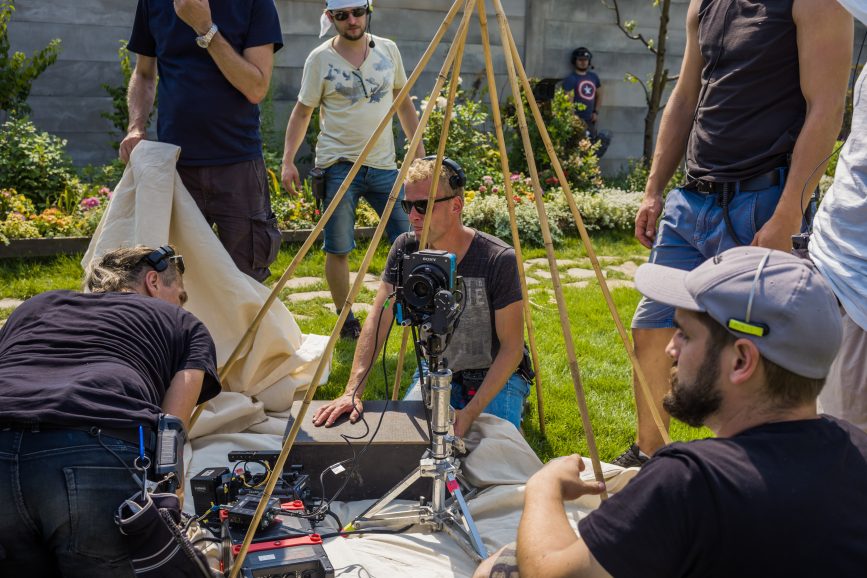
Immersed in the process
Interspersed with the largely geometrical footage were black-and-white nighttime shots of a girl leaving food for Jewish prisoners, shot using an FLIR thermal imaging military camera supplied by ARRI Rental. “The cameras were designed for the military to use to observe at borders, rather than for filming, so we needed to deconstruct it, perform multiple tests and collaborate closely with FLIR to alter the way it works because it sees temperature rather than light or dynamic range,” says Żal. “Playback and focus were also completely different to a normal camera and the resolution was low at only 1K, so it looked horrible before we upscaled it using artificial intelligence.”
These night vision-style scenes fitted in with the filmmakers’ rule of working with 21st century technology. “We needed to work out how we would shoot a scene at night in a field where there would be no light while trying to avoid the tropes of filmmaking. What tools do we need?” says Glazer. “That led us to thermal imaging and that‘s all part of everything in this film being looked at through a 21st century lens.”
As Żal was prepping his next film when the grade was carried out, colourist Gareth Bishop (Under the Skin) and Glazer worked closely during this stage with an ambition to avoid too much image manipulation and to retain the naturalistic look of the footage that was close to the LUTs. With such a vast amount of footage captured simultaneously by 10 cameras, the edit process was extensive, spanning almost two years and seeing Glazer team up with another Under The Skin collaborator, editor Paul Watts.
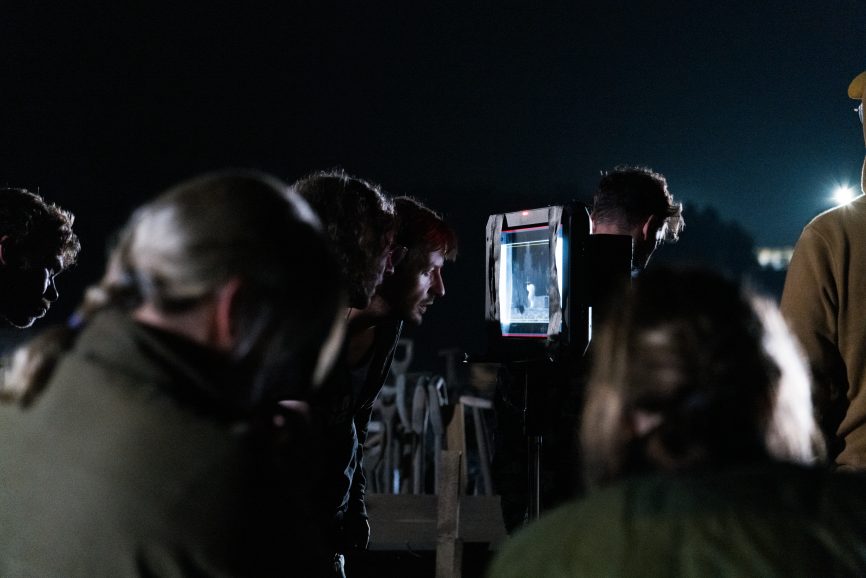
Being “immersed in the strange process” of making The Zone of Interest with such a supportive and creative team was a unique and memorable experience for Żal who admits he did not always know where it would lead him. “There were high moments when we knew we were filming something strong and unusual, but also moments where things didn’t work. That’s what’s amazing about working with Jonathan – he’s always moving forward, digging into this reality, this location, looking for a frame or a camera set-up, trying to find the best way to tell this story. There’s always a solution.”
While embracing unconventional filmmaking techniques, Żal learnt that “stories which are real and honest can be powerful and beautiful even if they are not visually attractive.” The priority, as well as telling an authentic story, was finding “good people” to make the film alongside. “We created such an amazing group who were supportive, smiling and became great friends. Everyone wanted to make this work and were willing to solve problems,” he says.
“Being in Auschwitz, in this place where terrible things happened, you could survive the difficult times because of that fantastic team. Telling this awful story but with talented people with so much heart made it a special experience. Without those incredible collaborators, I’m just the MCSS – Multi-Camera System Supervisor.”

